My
List |
Addition Date
|
Target
|
Mission
|
Instrument
|
Size
|

|
1998-10-14 |
Jupiter
|
Galileo
Hubble Space Telescope
|
|
850x950x3 |

|
-
PIA01477:
-
Jupiter's White Ovals
Full Resolution:
TIFF
(648.3 kB)
JPEG
(32.09 kB)
|

|
1998-09-26 |
Titan
|
Hubble Space Telescope
|
WFPC2
|
600x750x3 |

|
-
PIA01465:
-
Hubble Observes Surface of Titan
Full Resolution:
TIFF
(564.6 kB)
JPEG
(37.66 kB)
|

|
1998-09-26 |
Saturn
|
Hubble Space Telescope
|
WFPC2
|
782x540x3 |
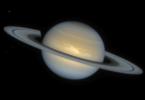
|
-
PIA01464:
-
Hubble Observes a New Saturn Storm
Full Resolution:
TIFF
(312.8 kB)
JPEG
(16.72 kB)
|

|
1998-08-03 |
Hale-Bopp
|
Hubble Space Telescope
|
WFPC2
|
800x465x3 |

|
-
PIA01291:
-
Hubble Sees Material Ejected From Comet Hale-Bopp
Full Resolution:
TIFF
(568.3 kB)
JPEG
(47.2 kB)
|

|
1998-08-03 |
Hyakutake
|
Hubble Space Telescope
|
WFPC2
|
1152x893x3 |
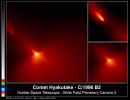
|
-
PIA01290:
-
Hubble Probes Inner Region of Comet Hyakutake
Full Resolution:
TIFF
(1.269 MB)
JPEG
(77.61 kB)
|

|
1998-08-02 |
Hale-Bopp
|
Hubble Space Telescope
|
WFPC2
|
1152x825x3 |

|
-
PIA01289:
-
Hubble Images of Comet Hale-Bopp
Full Resolution:
TIFF
(1.289 MB)
JPEG
(124.7 kB)
|

|
1998-08-02 |
Hyakutake
|
Hubble Space Telescope
|
WFPC2
|
991x486x3 |

|
-
PIA01288:
-
Comet Hyakutake C/1996 B2
Full Resolution:
TIFF
(1.005 MB)
JPEG
(29.38 kB)
|

|
1998-08-02 |
Neptune
|
Hubble Space Telescope
|
WFPC2
|
510x259x3 |
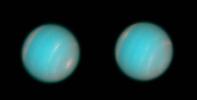
|
-
PIA01287:
-
Hubble Space Telescope Wide Field Planetary Camera 2 Observations of Neptune
Full Resolution:
TIFF
(103 kB)
JPEG
(7.186 kB)
|

|
1998-08-02 |
Neptune
|
Hubble Space Telescope
|
WFPC2
|
800x450x1 |
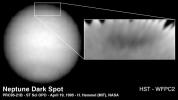
|
-
PIA01286:
-
Hubble Finds New Dark Spot on Neptune
Full Resolution:
TIFF
(140 kB)
JPEG
(26.2 kB)
|

|
1998-08-02 |
Neptune
|
Hubble Space Telescope
|
WFPC2
|
800x500x3 |

|
-
PIA01285:
-
Hubble's View of Neptune
Full Resolution:
TIFF
(625.7 kB)
JPEG
(25.5 kB)
|

|
1998-08-02 |
Neptune
|
Hubble Space Telescope
|
WFPC2
|
1152x710x3 |
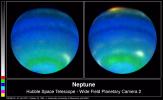
|
-
PIA01284:
-
Neptune in Primary Colors
Full Resolution:
TIFF
(1.179 MB)
JPEG
(69.37 kB)
|

|
1998-08-02 |
Uranus
|
Hubble Space Telescope
|
WFPC2
|
737x256x1 |
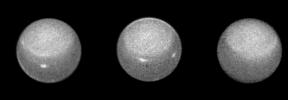
|
-
PIA01283:
-
Hubble the Rotation of Uranus
Full Resolution:
TIFF
(68.48 kB)
JPEG
(13.52 kB)
|

|
1998-08-02 |
Uranus
|
Hubble Space Telescope
|
WFPC2
|
600x800x1 |

|
-
PIA01282:
-
Hubble Observes the Planet Uranus
Full Resolution:
TIFF
(192.2 kB)
JPEG
(49.21 kB)
|

|
1998-08-02 |
Uranus
|
Hubble Space Telescope
|
WFPC2
|
490x512x1 |

|
-
PIA01281:
-
Hubble Observes the Moons and Rings of Uranus
Full Resolution:
TIFF
(15.63 kB)
JPEG
(9.077 kB)
|

|
1998-08-02 |
Uranus
|
Hubble Space Telescope
|
WFPC2
|
450x293x3 |
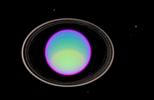
|
-
PIA01280:
-
Hubble Captures Detailed Image of Uranus' Atmosphere
Full Resolution:
TIFF
(103 kB)
JPEG
(10.02 kB)
|

|
1998-08-02 |
Uranus
|
Hubble Space Telescope
|
WFPC2
|
1125x900x3 |

|
-
PIA01279:
-
Hubble Spots Northern Hemispheric Clouds on Uranus
Full Resolution:
TIFF
(1.128 MB)
JPEG
(72.31 kB)
|

|
1998-08-02 |
Saturn
|
Hubble Space Telescope
|
WFPC2
|
600x800x1 |

|
-
PIA01277:
-
Hubble Views Saturn Ring-Plane Crossing (Satellites Labeled)
Full Resolution:
TIFF
(153.2 kB)
JPEG
(39 kB)
|

|
1998-08-02 |
Saturn
|
Hubble Space Telescope
|
WFPC2
|
600x800x1 |

|
-
PIA01276:
-
Hubble Views Saturn Ring-Plane Crossing
Full Resolution:
TIFF
(129.6 kB)
JPEG
(30.62 kB)
|

|
1998-08-02 |
Saturn
|
Hubble Space Telescope
|
WFPC2
|
600x750x1 |

|
-
PIA01275:
-
Saturn's Rings Edge-on
Full Resolution:
TIFF
(149.8 kB)
JPEG
(29.58 kB)
|

|
1998-08-02 |
Saturn
|
Hubble Space Telescope
|
WFPC2
|
550x850x1 |

|
-
PIA01274:
-
Hubble Discovery Image of New Moon Orbiting Saturn
Full Resolution:
TIFF
(234.7 kB)
JPEG
(49.62 kB)
|

|
1998-08-02 |
Saturn
|
Hubble Space Telescope
|
WFPC2
|
892x459x1 |
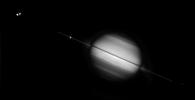
|
-
PIA01273:
-
Hubble again views Saturn's Rings Edge-on
Full Resolution:
TIFF
(53.74 kB)
JPEG
(9.671 kB)
|

|
1998-08-02 |
Saturn
|
Hubble Space Telescope
|
WFPC2
|
1133x900x3 |
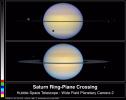
|
-
PIA01272:
-
Edge-on View of Saturn's Rings
Full Resolution:
TIFF
(675.7 kB)
JPEG
(76.35 kB)
|

|
1998-08-02 |
Saturn
|
Hubble Space Telescope
|
WFPC2
|
630x900x3 |

|
-
PIA01271:
-
Moons Around Saturn
Full Resolution:
TIFF
(806.3 kB)
JPEG
(113.5 kB)
|

|
1998-08-02 |
Saturn
|
Hubble Space Telescope
|
WFPC2
|
944x582x3 |
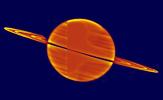
|
-
PIA01270:
-
Sunset on Saturn's Rings
Full Resolution:
TIFF
(446.8 kB)
JPEG
(28.36 kB)
|

|
1998-08-02 |
Saturn
|
Hubble Space Telescope
|
WFPC2
|
819x900x3 |

|
-
PIA01269:
-
Hubble Provides Clear Images of Saturn's Aurora
Full Resolution:
TIFF
(1.941 MB)
JPEG
(176.9 kB)
|

|
1998-08-02 |
Saturn
|
Hubble Space Telescope
|
WFPC2
|
1125x900x3 |
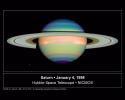
|
-
PIA01268:
-
An Infrared View of Saturn
Full Resolution:
TIFF
(666.6 kB)
JPEG
(58.74 kB)
|

|
1998-05-05 |
Mars
|
Hubble Space Telescope
|
WFPC2
|
400x200x3 |
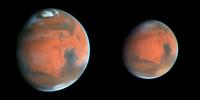
|
-
PIA01243:
-
Hubble Watches the Red Planet as Mars Global Surveyor Begins Aerobraking
Full Resolution:
TIFF
(116.9 kB)
JPEG
(7.111 kB)
|

|
1998-05-02 |
Jupiter
|
Hubble Space Telescope
|
WFPC2
|
800x600x3 |

|
-
PIA01267:
-
Hubble Space Telescope Resolves Volcanoes on Io
Full Resolution:
TIFF
(357 kB)
JPEG
(40.59 kB)
|

|
1998-05-02 |
Jupiter
|
Hubble Space Telescope
|
WFPC2
|
600x854x1 |

|
-
PIA01266:
-
Jupiter's Upper Atmospheric Winds Revealed in Ultraviolet Images by Hubble Telescope
Full Resolution:
TIFF
(239.6 kB)
JPEG
(62.37 kB)
|

|
1998-05-02 |
Jupiter
|
Hubble Space Telescope
|
WFPC2
|
800x600x1 |
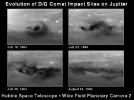
|
-
PIA01265:
-
Month-long Evolution of the D/G Jupiter Impact Sites from Comet P/Shoemaker-Levy 9
Full Resolution:
TIFF
(226.8 kB)
JPEG
(54.55 kB)
|

|
1998-05-02 |
Jupiter
|
Hubble Space Telescope
|
WFPC2
|
830x568x3 |
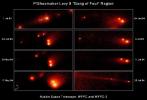
|
-
PIA01264:
-
Evolution of the P/Shoemaker-Levy 9 "Gang of Four" Region
Full Resolution:
TIFF
(543.5 kB)
JPEG
(69.45 kB)
|

|
1998-05-02 |
Jupiter
|
Hubble Space Telescope
|
WFPC2
|
750x700x3 |
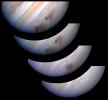
|
-
PIA01263:
-
Jupiter G Impact Evolution
Full Resolution:
TIFF
(752.8 kB)
JPEG
(31.92 kB)
|

|
1998-05-02 |
Jupiter
|
Hubble Space Telescope
|
WFPC2
|
800x800x3 |
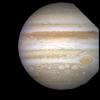
|
-
PIA01262:
-
Hubble Tracks Jupiter Storms
Full Resolution:
TIFF
(1.085 MB)
JPEG
(40.51 kB)
|

|
1998-05-02 |
Jupiter
|
Hubble Space Telescope
|
WFPC2
|
600x700x3 |

|
-
PIA01261:
-
Hubble Gallery of Jupiter's Galilean Satellites
Full Resolution:
TIFF
(527.3 kB)
JPEG
(44.81 kB)
|

|
1998-05-02 |
Jupiter
|
Hubble Space Telescope
|
WFPC2
|
800x600x3 |
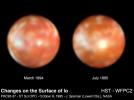
|
-
PIA01260:
-
Hubble Discovers Bright New Spot on Io
Full Resolution:
TIFF
(604.4 kB)
JPEG
(33.67 kB)
|

|
1998-05-02 |
Jupiter
|
Hubble Space Telescope
|
WFPC2
|
850x490x3 |
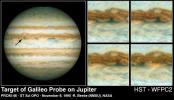
|
-
PIA01259:
-
Hubble Views the Galileo Probe Entry Site on Jupiter
Full Resolution:
TIFF
(993.4 kB)
JPEG
(64.05 kB)
|

|
1998-05-02 |
Jupiter
|
Hubble Space Telescope
|
WFPC2
|
720x600x1 |
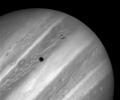
|
-
PIA01258:
-
Rare Hubble Portrait of Io and Jupiter
Full Resolution:
TIFF
(305.8 kB)
JPEG
(28.52 kB)
|

|
1998-05-02 |
Jupiter
|
Hubble Space Telescope
|
WFPC2
|
2069x2489x3 |

|
-
PIA01257:
-
Hubble Images Reveal Jupiter's Auroras
Full Resolution:
TIFF
(6.679 MB)
JPEG
(483.2 kB)
|

|
1998-05-02 |
Jupiter
|
Hubble Space Telescope
|
WFPC2
|
720x900x3 |

|
-
PIA01256:
-
Hubble Captures Volcanic Eruption Plume From Io
Full Resolution:
TIFF
(1.097 MB)
JPEG
(65.49 kB)
|

|
1998-05-02 |
Jupiter
|
Hubble Space Telescope
|
WFPC2
|
1152x860x3 |
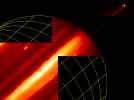
|
-
PIA01255:
-
Hubble Provides Infrared View of Jupiter's Moon, Ring, and Clouds
Full Resolution:
TIFF
(645.9 kB)
JPEG
(67.7 kB)
|

|
1998-05-02 |
Jupiter
|
Hubble Space Telescope
|
WFPC2
|
795x900x3 |

|
-
PIA01254:
-
Hubble Provides Complete View of Jupiter's Auroras
Full Resolution:
TIFF
(1.387 MB)
JPEG
(114 kB)
|

|
1998-05-02 |
Mars
|
Hubble Space Telescope
|
WFPC2
|
800x800x3 |
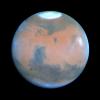
|
-
PIA01253:
-
Springtime on Mars: Hubble's Best View of the Red Planet
Full Resolution:
TIFF
(927.6 kB)
JPEG
(30.76 kB)
|

|
1998-05-02 |
Mars
|
Hubble Space Telescope
|
WFPC2
|
800x525x3 |

|
-
PIA01252:
-
Mars At Opposition
Full Resolution:
TIFF
(690.9 kB)
JPEG
(45.74 kB)
|

|
1998-05-02 |
Mars
|
Hubble Space Telescope
|
WFPC2
|
2061x2701x3 |

|
-
PIA01251:
-
Springtime Dust Storm Swirls at Martian North Pole
Full Resolution:
TIFF
(6.992 MB)
JPEG
(317.1 kB)
|

|
1998-05-02 |
Mars
|
Hubble Space Telescope
|
WFPC2
|
2850x2025x3 |
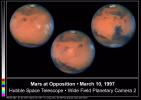
|
-
PIA01250:
-
Hubble Captures A Full Rotation Of Mars
Full Resolution:
TIFF
(6.68 MB)
JPEG
(337.5 kB)
|

|
1998-05-02 |
Mars
|
Hubble Space Telescope
|
WFPC2
|
335x335x3 |
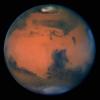
|
-
PIA01249:
-
Hubble's Sharpest View Of Mars
Full Resolution:
TIFF
(184.1 kB)
JPEG
(10.13 kB)
|

|
1998-05-02 |
Mars
|
Hubble Space Telescope
|
WFPC2
|
2400x3000x3 |

|
-
PIA01248:
-
Four Views of Mars in Northern Summer
Full Resolution:
TIFF
(11.49 MB)
JPEG
(413.8 kB)
|

|
1998-05-02 |
Mars
|
Hubble Space Telescope
|
WFPC2
|
3000x2250x3 |
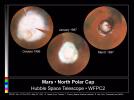
|
-
PIA01247:
-
Seasonal Changes in Mars' North Polar Ice Cap
Full Resolution:
TIFF
(6.358 MB)
JPEG
(308.6 kB)
|

|
1998-05-02 |
Mars
|
Hubble Space Telescope
|
WFPC2
|
3000x2400x3 |
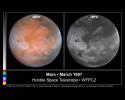
|
-
PIA01246:
-
Comparison View of Mars Cloud Cover
Full Resolution:
TIFF
(6.831 MB)
JPEG
(373.6 kB)
|

|
1998-05-02 |
Mars
|
Hubble Space Telescope
|
WFPC2
|
2400x3000x3 |

|
-
PIA01245:
-
Hubble's Look at Mars Shows Canyon Dust Storm, Cloudy Conditions for Pathfinder Landing
Full Resolution:
TIFF
(9.466 MB)
JPEG
(377.4 kB)
|

|
1998-05-02 |
Mars
|
Hubble Space Telescope
|
WFPC2
|
2400x3000x3 |

|
-
PIA01244:
-
Decay of a Martian Dust Storm
Full Resolution:
TIFF
(11.14 MB)
JPEG
(411 kB)
|

|
1998-03-28 |
Pluto
|
Hubble Space Telescope
|
Faint Object Camera
|
950x494x3 |
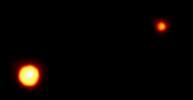
|
-
PIA00827:
-
Hubble Portrait of the "Double Planet" Pluto & Charon
Full Resolution:
TIFF
(123.4 kB)
JPEG
(10.7 kB)
|

|
1998-03-28 |
Pluto
|
Hubble Space Telescope
|
Faint Object Camera
|
2813x1737x1 |
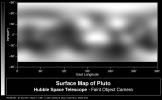
|
-
PIA00826:
-
Map of Pluto's Surface
Full Resolution:
TIFF
(1.149 MB)
JPEG
(231.7 kB)
|

|
1998-03-28 |
Pluto
|
Hubble Space Telescope
|
Faint Object Camera
|
2573x1945x1 |
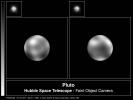
|
-
PIA00825:
-
The Surface of Pluto
Full Resolution:
TIFF
(591.8 kB)
JPEG
(196.1 kB)
|

|
1997-10-10 |
|
Hubble Space Telescope
|
|
3000x2000x3 |
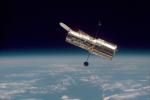
|
-
PIA18165:
-
Hubble Against Earth's Horizon (1997)
Full Resolution:
TIFF
(18.01 MB)
JPEG
(297.5 kB)
|

|
1996-01-16 |
|
Hubble Space Telescope
|
WFPC2
|
1280x1280x3 |
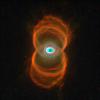
|
-
PIA14442:
-
Hubble Finds an Hourglass Nebula around a Dying Star
Full Resolution:
TIFF
(4.917 MB)
JPEG
(194.2 kB)
|

|
1996-01-15 |
|
Hubble Space Telescope
|
WFPC2
|
1771x1819x3 |

|
-
PIA12110:
-
Hubble Deep Field Image Unveils Myriad Galaxies Back to the Beginning of Time
Full Resolution:
TIFF
(9.679 MB)
JPEG
(1.226 MB)
|

 Planetary Data System
Planetary Data System








































































